
views
Purchasing Your Cat Grass

Talk with your veterinarian. At the annual appointment for your cat, bring up your interest in getting some grass for your cat. Talk to the vet about whether or not that would be beneficial for your cat’s individual health and circumstances. Ask them for tips regarding buying the grass and monitoring your cat’s health as they eat it. For example, you might tell your vet, “I’ve noticed that my cat is very interested in my houseplants. Do you think it would be a good idea to get my cat a bed of indoor grass to chew on?”
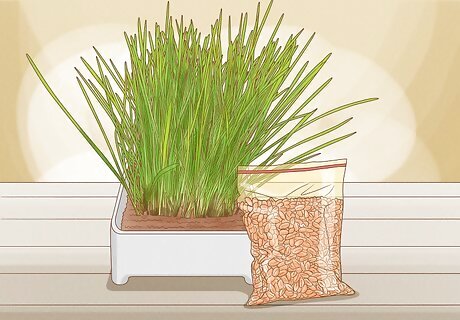
Decide whether to buy seeds or grown plants. The benefit of buying seeds is that you potentially get a longer growing period as the grass will be good to eat for a full two weeks after maturation. However, you have no guarantee that planting seeds will result in quality, even grass. Buying a full-grown grass patch will allow to access the health of the grass, while allowing your cat the chance to eat it right away.

Buy from a reputable store. Most pet stores, outdoors stores, and hardware stores offer cat grass plots or the seeds needed to plant your own patch. Before you buy, read any online reviews that you can find about the quality of the plants sold at that particular store. This is especially important if you choose to buy from an online vendor. Also, try to determine whether or not your purchase will be covered by some sort of guarantee. Many stores will offer to refund your money on any plants that don’t live past a certain period.

Sign up for a delivery program. If you would like to offer grass to your cat on a consistent basis, but don’t want to deal with the hassle of picking it up or growing it, then a delivery option might be good for you. Some online pet stores allow you to sign up for bi-weekly or monthly grass deliveries. Quite often, this cat grass is fully grown, ready to be consumed, and sometimes even organic. If you agree to one of these programs, make sure that they offer different types of grass so that you can switch in case your cat disagrees with a particular one. With a delivery program, make sure that you have good place to receive the deliveries. You won’t want the grass sitting outside for too long before bringing it inside, for example.
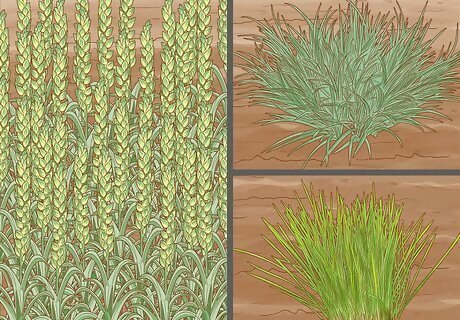
Select the right type of grass. There are many different types of grass that fall under the general label of cat grass. You can choose orchard grass, common oat, barley, or even wheatgrass. These plants all have different tastes when eaten, so it is a good idea to purchase a few varieties or rotate them out for your cat. Then, watch to see if your cat eats more, or regurgitates more, of one type. Getting a mixed blend cat grass plot, or seed package, is another option. If your cat eats a mixture of different grass types this mimics what they might do in the wild. You may also find that certain grass types grow better in your home than others. Experiment with sunlight exposure and light levels with the grass varieties.
Caring for Your Cat Grass
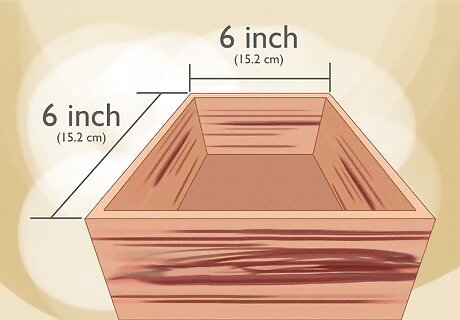
Choose the correct container. You’ll need a container that is large enough to provide space for the grass to grow. But, also one that is a manageable size to keep and maintain indoors. Most people find that a small flower planter or a 6 inch (15.2 cm) by 6 inch wooden square container is sufficient. After all, you will be continually trimming and replanting, so a large container isn’t necessary for the health of the grass. You’ll also want a container that your cat will feel comfortable approaching and eating from. For example, if shiny objects frighten your cat, you may want to stay away from a silver planter or one that will catch the light.
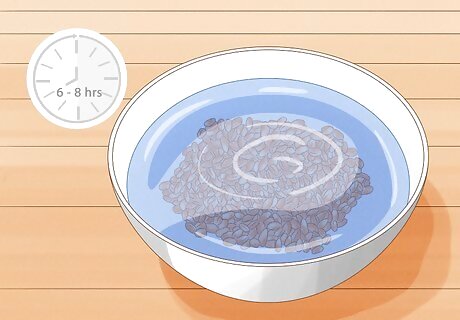
Soak your seeds prior to planting. After you purchase your grass seeds and prepare your planter, take the seeds out of their package. Place them in a glass and fill it with water. Let the seeds soak up the water for 6-8 hours. Then, remove the seeds and place them immediately into the planter surrounded by fresh soil.
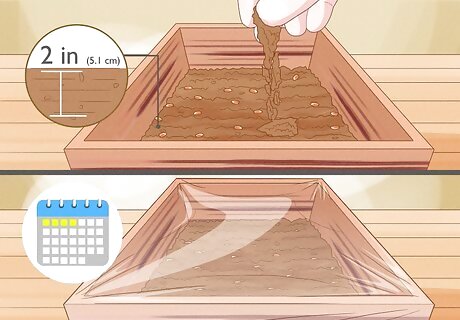
Cover the seeds. At the bottom of the planter, add at least 2 inches (5.1 cm) of soil. Place the seeds on top of this soil and cover them with a light sprinkling of soil. Don’t bury the seeds deeply, just make sure that you can no longer see them. If you want to accelerate the growing process, cover the soil with a layer of plastic wrap, which will trap any moisture. Give the seeds 3-4 days to grow and then remove the wrap.
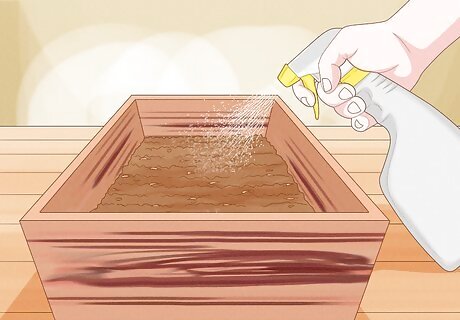
Keep the soil moist, not wet. Fill a small spray bottle with water and mist the soil at least once each day. You want the soil to be damp to help the seeds to take hold, but not saturated or they will fall too deeply into the soil and will not sprout out. In the initial period, you can peel back the plastic wrap in order to mist the soil. In order to keep the moisture from escaping, you may want to line your grass container with plastic or place it on top of something that can catch the run off.
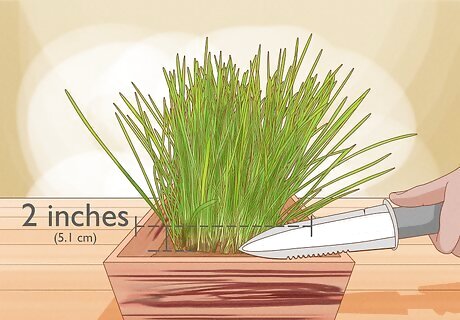
Keep the grass trimmed short. Most of the various brands of cat grass can grow quite high if left unchecked. However, cats may not feel as comfortable eating from containers with very high grass. So, use scissors to trim your cat grass down to a manageable height of 2 inches (5.1 cm). Your cat will also help to keep the grass trimmed by chewing on it, but it won’t be uniform.
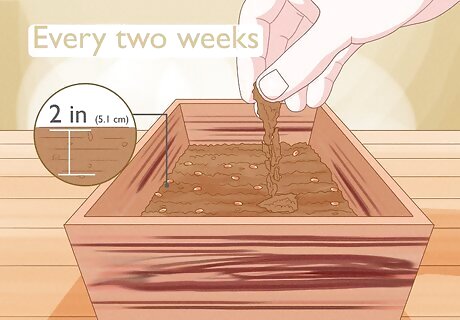
Replace your grass every two weeks. After about two weeks of trimming, your cat grass will reach full maturity and will need to be replaced. It is a good idea to plant a handful of plots, staggering them by a week at a time, so that you will always have fresh grass ready for your cat. Try not to keep the plot beyond this fresh period or the taste may change and your cat may reject grass entirely.
Introducing the Grass into Your Home
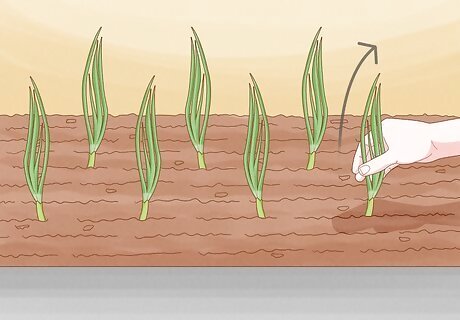
Remove all poisonous plants from your home. When your cat begins to chew on grass, they may see all of your household plants as fair game food. Before you introduce any grass into your home, go through and evaluate all of your houseplants. Remove those that are potentially poisonous or dangerous. Some plants that are dangerous to cats, include figs, onions, and lilies.
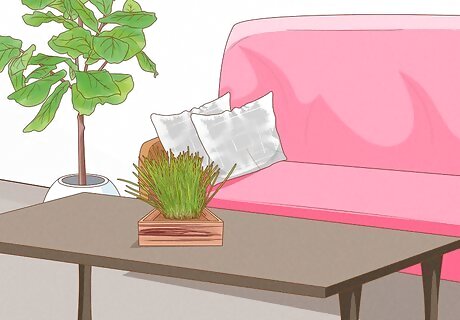
Place the grass in an accessible area. If your cat likes to chew on other plants or furniture, you may want to put the cat grass container directly in front of these as a distraction. You also want the grass in an area that the cat frequently visits, so that they don’t have to seek it out. Place the container in a spot where the cat can’t knock it off either, or you may end up with a broke container and dirty carpet. The cat grass container will also need exposure to a certain amount of light, at least a few hours every day. Avoid prolonged exposure to direct sunlight as it can dry out and burn the plant.
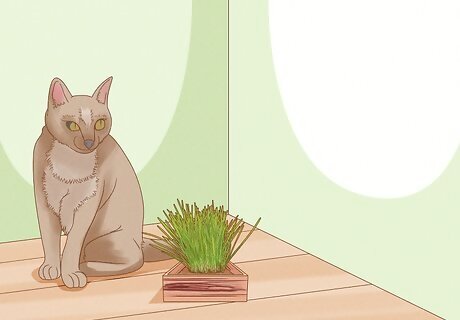
Let your cat check out the new grass. After you place the grass down, expect your cat to walk around the container and give it a sniff or two. They may even try to claw or paw at the grass a bit. They may do some tentative chewing at this point or go directly into more aggressive biting on the strands.
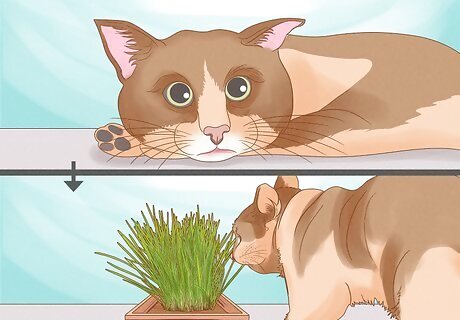
Expect your cat to eat more when stressed. You may start to notice that your cat will go and chew on the grass plot, or lie down next to it, when they are feeling overwhelmed or anxious. After grass has been available to your cat for some time, they will start to associate it with calming emotions. This, in turn, may reduce some of your cat’s other destructive behaviors, such as furniture clawing.
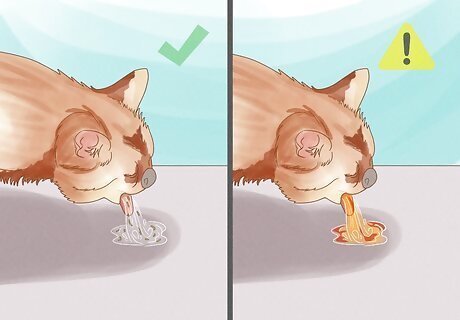
Know that some regurgitation is okay. It is not uncommon for cats to spit up a few strands of grass and saliva after eating from their plot. This can actually be a good thing as it allows your cat to clear out other non-digested matter from their stomachs at the same time. Be prepared for these moments by having a good stain spray on hand. If you’ve noticed that your cat’s vomit includes blood, or if your cat stops eating their other food, then you should contact your vet for advice. Be aware that a blade of grass may sometimes get stuck in a cat's throat. Signs that this may have happened include drooling, exaggerated swallowing, vomiting, and a bad odor coming from the cat's mouth or nose. If you suspect that your cat has a blade of grass stuck in his throat, then you will need to take him to the vet to have the grass removed under sedation.
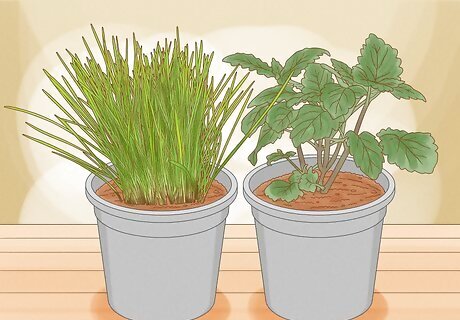
Consider pairing it with catnip. You can either grow catnip in a separate container, which you can then place close to the grass plot. You can intermix catnip seeds with grass ones and grow it all together. Or, you can sprinkled dried catnip on top of the fresh grass. You may notice that your cat will rub their face on top of the grass plot after you do this and that is a normal reaction.

















Comments
0 comment